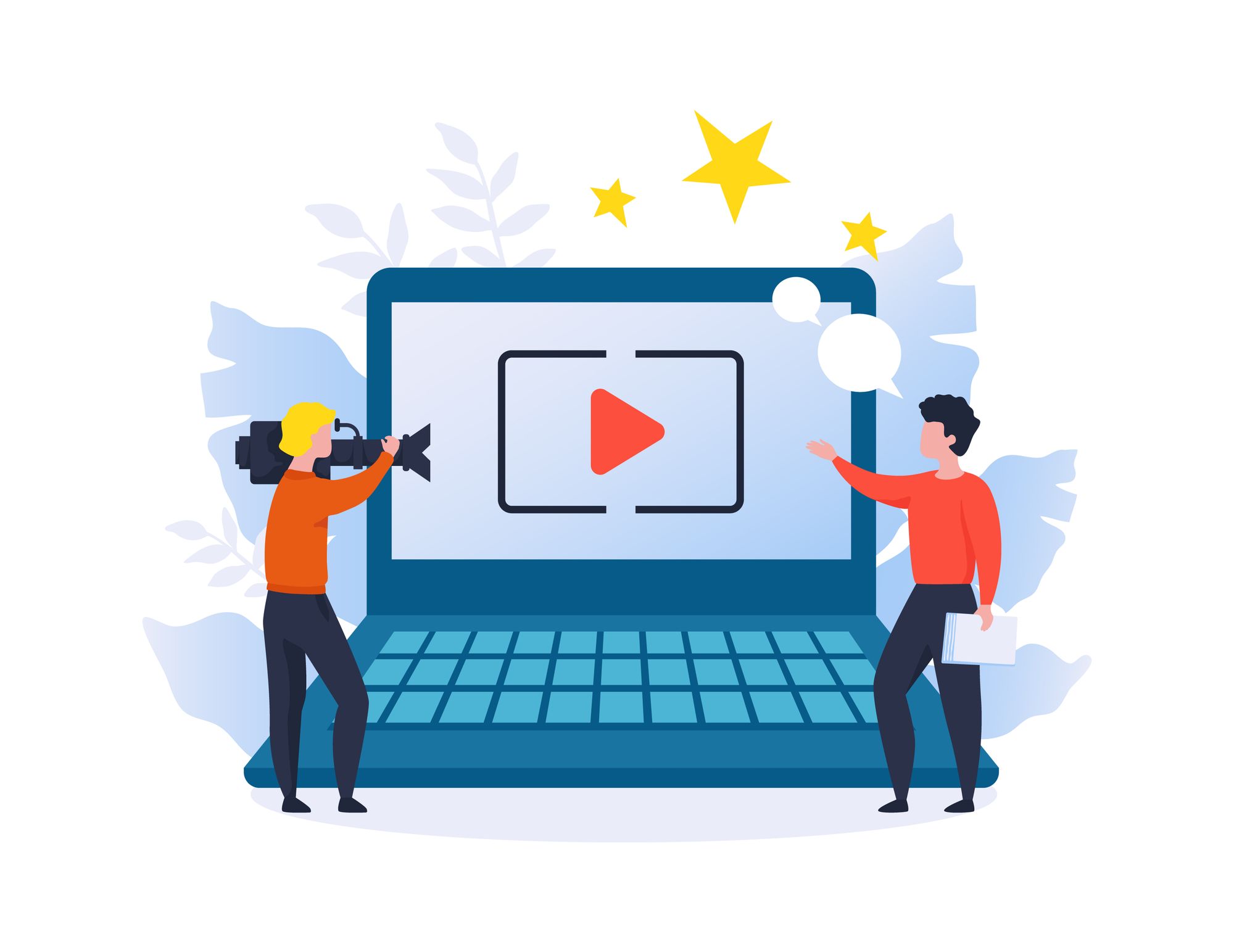In today's fast-paced digital world, it is crucial for businesses to provide their customers with easily accessible and digestible information. This is especially true for online businesses, where the learning curve can be steep and users may be less inclined to invest time in mastering the platform. Instructional videos have emerged as a powerful tool in addressing these challenges, enabling businesses to communicate complex ideas effectively and efficiently.
Importance of instructional videos for online businesses
Instructional videos have become an essential component in the arsenal of successful online businesses. They offer an engaging way to convey information, making it easier for users to understand and apply the knowledge they have acquired. By breaking down complex concepts into bite-sized pieces, instructional videos help users grasp the information at their own pace. Additionally, these videos provide a valuable resource that customers can return to whenever they need clarification or guidance, thereby increasing customer satisfaction and retention.
Meeting users' informational intent
The primary goal of instructional videos is to meet users' informational intent. By offering clear, concise, and actionable content, businesses can ensure that users find the information they need to utilize the platform or service effectively. These videos should address common questions and pain points while also offering tips and best practices for optimal usage. By catering to users' informational needs, businesses can create a positive user experience that fosters loyalty and encourages long-term engagement.
I still remember the first time I encountered a particularly complex online software application. I was excited about its potential but quickly became overwhelmed by the numerous features and functions. On the verge of giving up, I stumbled upon a series of instructional videos provided by the company. As I watched the videos, I felt a sense of relief, as each one broke down the complexities into digestible segments.
These videos not only taught me how to navigate the platform but also provided valuable tips and shortcuts that I would not have discovered on my own. Thanks to the instructional videos, I was able to master the software and fully reap its benefits. This personal experience solidified my belief in the power of instructional videos and their ability to transform a user's experience with a product or service.
The Benefits of Instructional Videos
Enhanced user engagement
Instructional videos are a highly engaging medium that can capture and hold the attention of users. By employing visual aids, animations, and clear voiceovers, these videos provide an interactive learning experience that encourages users to become more invested in the platform. This enhanced engagement leads to greater user satisfaction and encourages them to explore the software more deeply, ultimately driving adoption and success.
The improved customer onboarding experience
A smooth onboarding process is crucial for SaaS companies, as it sets the stage for users' entire experience with the platform. Instructional videos can significantly improve the onboarding process by providing users with step-by-step guidance and clear explanations of the platform's features and functions. This enables users to quickly grasp the software's capabilities, reducing the time and effort required to become proficient in its use, and fostering a positive first impression.
Increased customer retention
A well-structured instructional video library can contribute to increased customer retention. By offering users a comprehensive resource to consult whenever they encounter challenges or have questions, SaaS companies can demonstrate their commitment to user success. This not only helps users feel supported but also encourages them to continue using the platform, knowing that assistance is readily available.
Simplified complex concepts
One of the key benefits of instructional videos is their ability to simplify complex concepts. Through the use of visual aids, analogies, and step-by-step guidance, these videos can break down intricate processes and ideas into easily digestible segments. This empowers users to understand and apply the information, leading to increased confidence and proficiency in using the platform.
Scalability and cost-effectiveness
Instructional videos offer a scalable and cost-effective solution for SaaS companies looking to support their growing user base. Once a video is produced, it can be shared with an unlimited number of users at no additional cost. This makes instructional videos an ideal tool for businesses looking to expand their reach and provide consistent, high-quality support to their customers. Additionally, as these videos reduce the need for one-on-one support, they can help companies save on support resources and costs in the long run.
Choosing the Right Type of Instructional Video
Screencasts
Screencasts are recordings of a computer screen that walk users through a particular process or feature within the software. They are especially useful for demonstrating how to use specific functions within the platform and can be easily created using screen recording software. Screencasts are an effective way to provide step-by-step instructions and are particularly well-suited for SaaS applications with complex interfaces or workflows.
Animated explainer videos
Animated explainer videos use illustrations, animations, and voiceovers to convey complex concepts or processes in a visually appealing and engaging manner. These videos are ideal for breaking down abstract ideas or demonstrating the overall benefits of your SaaS platform. They can help users quickly understand the value of your product and how it can solve their specific pain points.
Live-action demonstrations
Live-action demonstrations showcase real people using the software, highlighting its features and benefits in a relatable and authentic way. These videos can be particularly effective in building trust with potential users and demonstrating the practical applications of your SaaS platform. Live-action demonstrations can also showcase the human side of your business, making it more approachable and appealing to users.
Expert interviews
Expert interviews feature industry professionals or members of your team discussing various aspects of your SaaS platform, such as its unique features, best practices, or the challenges it solves. These videos can lend credibility to your product and showcase your company's expertise, helping to build trust with users and establish your business as a thought leader in the industry.
Webinars
Webinars are live or pre-recorded video presentations that delve into specific topics related to your SaaS platform. They typically include a mix of slides, live demonstrations, and Q&A sessions, offering users an interactive and engaging learning experience. Webinars can be an effective way to provide in-depth training on your product, share updates or new features, and foster a sense of community among your users.
Video case studies
Video case studies highlight the success stories of your customers who have benefited from using your SaaS platform. By showcasing real-life examples of how your software has helped users overcome challenges and achieve their goals, these videos can serve as powerful social proof and help potential customers see the value in your product.
Tips for selecting the best instructional video format for your business
Consider your audience: Understand the specific needs and preferences of your target users, and choose a video format that resonates with them.
Identify your goals: Determine the primary objectives of your instructional video (e.g., explaining a feature, demonstrating the software's value, providing in-depth training) and select a format that best achieves those goals.
Assess your resources: Consider your budget, expertise, and available tools when deciding on the type of video to create.
Test and iterate: Gather user feedback on your instructional videos, and make improvements based on their input to ensure your content continues to meet their needs and expectations.
Crafting a Compelling Script For Instructional Video
A well-crafted script is the foundation of a successful instructional video. It ensures that your content is engaging, clear, and effective in meeting the learning objectives. The following tips will help you create a compelling script for your instructional video
Identifying your audience
Understanding your target audience is essential for crafting a script that resonates with them. Consider their level of expertise, their familiarity with the subject matter, and their specific needs. This will help you tailor your content to suit their preferences and ensure that your message is both relevant and impactful.
Defining clear learning objectives
Establish clear learning objectives for your instructional video, which will guide your scriptwriting process. These objectives should outline the key takeaways and the desired outcome for viewers after watching the video. By defining these goals, you can ensure that your content remains focused and effectively addresses users' needs.
Organizing content into logical sections
Divide your script into logical sections or chapters that follow a clear, coherent structure. This will help users easily digest the information and make it more accessible. Begin with an introduction to set the context and outline the learning objectives, followed by the main content, and conclude with a summary or call to action. You can use an AI summary writer to quickly generate bite-sized summaries.
Creating a conversational and relatable tone
Adopt a conversational and relatable tone in your script to engage viewers and create a sense of connection. Avoid jargon and overly technical language, opting instead for simple, clear explanations. By using a friendly, approachable voice, you can make your content more enjoyable and easier to understand for users.
Keeping it concise and focused
Aim for brevity and focus in your script to keep viewers engaged and ensure that the content remains digestible. Prioritize the most important information, and avoid unnecessary detail or tangents.
By keeping your script concise and focused, you can deliver a more impactful message and prevent viewers from becoming overwhelmed or disengaged.
Best Practices for Filming and Production Instructional Video
Creating a high-quality instructional video involves not only crafting a compelling script but also ensuring that the filming and production are executed professionally. The following best practices will help you create an engaging, polished video that effectively communicates your message:
Equipment essentials
Camera: Invest in a high-quality camera that can capture clear, sharp footage. A DSLR or mirrorless camera is ideal, but even a smartphone with a high-resolution camera can produce satisfactory results if used correctly.
Tripod: A tripod is essential for stabilizing your camera and preventing shaky, unprofessional footage. Choose a sturdy, adjustable tripod that can accommodate your camera and any additional equipment.
Microphone: Good audio quality is crucial for instructional videos. Invest in a quality external microphone, such as a Lavalier or shotgun mic, to capture clear, crisp sound.
Screen recording software: If you're creating screencasts, you'll need reliable screen recording software that can capture both video and audio from your computer screen.
Lighting and sound considerations
Natural light: If possible, film in a location with plenty of natural light to create a bright, inviting atmosphere. Position your subject near a window or other light source to avoid harsh shadows.
Artificial light: If natural light is insufficient, use artificial lighting to illuminate your subject. Softboxes or LED panels can provide soft, even lighting that mimics natural light.
Soundproofing: Choose a quiet location to film your video, and consider using soundproofing materials, such as foam panels or blankets, to minimize background noise and echo.
Ensuring high-quality visuals
Framing: Pay attention to the composition of your shot. Make sure the subject is centered in the frame, and avoid clutter or distractions in the background.
Focus: Ensure that your subject is in sharp focus, using the manual or auto-focus features on your camera. Blurry footage can appear unprofessional and detract from the viewer's experience.
Resolution: Shoot your video in the highest resolution possible to ensure crisp, clear visuals. Aim for at least 1080p (Full HD), or even 4K if your camera and editing software supports it.
Editing tips and tricks for a polished finish
Choose the right editing software: Select an editing program that fits your needs and skill level, such as Adobe Premiere Pro, Final Cut Pro, or iMovie.
Trim and refine: Edit your footage to remove any mistakes, awkward pauses, or unnecessary content. Keep your video concise and focused to maintain viewer engagement.
Add graphics and text: Use graphics, text, and animations to emphasize key points, illustrate concepts, or provide additional context.
Enhance audio quality: Use your editing software to adjust audio levels, remove background noise, and ensure that your voiceover or dialogue is clear and audible.
Incorporate music and sound effects: Add background music or sound effects sparingly to enhance the mood or emphasize specific moments in your video.
Export in high resolution: Export your finished video in the highest resolution possible to ensure a professional, polished final product.
Maximizing the Impact of Your Instructional Videos
To ensure that your instructional videos reach and engage your target audience, it's crucial to implement strategies that maximize their impact. The following tips will help you increase the visibility, accessibility, and overall effectiveness of your video content
Accessibility and video captions
Add captions: Including captions or subtitles in your videos not only improves accessibility for viewers with hearing impairments but also enhances the overall user experience, making it easier for viewers to follow along and understand the content.
Offer transcripts: Providing a text transcript of your video content can further improve accessibility, as well as offer an alternative format for users who may prefer to read the information.
Use clear visuals: Ensure that your visuals are easy to understand and that any text or graphics are legible, even for viewers with visual impairments.
SEO optimization for increased discoverability
Use relevant keywords: Incorporate relevant keywords in your video title, description, and tags to improve search engine rankings and make it easier for users to find your content.
Optimize video thumbnails: Create eye-catching, custom thumbnails that accurately represent your video content and entice viewers to click.
Leverage video hosting platforms: Utilize hosting platforms such as YouTube or StoryXpress that have built-in SEO optimization features to increase the visibility and discoverability of your content.
Promotion strategies on social media and other channels
Share on social media: Promote your instructional videos on social media platforms such as LinkedIn, Twitter, and Facebook to reach a wider audience and drive traffic to your content.
Embed videos on your website: Integrate your instructional videos into relevant pages on your website or blog, making it easier for users to access and engage with the content.
Collaborate with influencers: Partner with industry influencers to share your content with their audiences, expanding your reach and increasing your credibility within the community.
Use email marketing: Share your videos with your email subscribers, either by embedding them in newsletters or by including links to the content in your messages.
Regularly updating and refreshing your content
Monitor user feedback: Pay attention to user comments, questions, and feedback to identify areas where your instructional videos may need improvement or updates.
Stay current: Update your content to reflect any changes in your software, industry trends, or user needs, ensuring that your videos remain relevant and valuable over time.
Repurpose content: Consider repurposing your video content into different formats, such as blog posts, infographics, or podcasts, to expand your reach and cater to various user preferences.
Measuring the Success of Your Instructional Videos
To ensure the ongoing success of your instructional videos, it's important to measure their performance and gather data to make informed improvements. Here are some key aspects to consider when assessing the impact of your instructional videos on your SaaS business:
Key performance indicators (KPIs) of Instructional Videos for Businesses businesses
Video views: Track the total number of times your instructional videos are viewed, as this can provide insights into the reach and visibility of your content.
Watch time: Monitor the average duration viewers spend watching your videos, as this can indicate how engaging and effective your content is.
Conversion rate: Measure the percentage of viewers who take a desired action after watching your instructional videos, such as signing up for a free trial, purchasing your product, or contacting your support team.
User retention: Assess the impact of your instructional videos on customer retention by comparing the retention rates of users who have viewed the videos with those who haven't.
Tracking user engagement metrics
Audience demographics: Analyze the demographics of your viewers, such as age, location, and device usage, to gain insights into your target audience and tailor your content accordingly.
Click-through rate (CTR): Track the percentage of viewers who click on calls-to-action, links, or other interactive elements within your instructional videos.
Social sharing: Monitor the number of times your videos are shared on social media platforms, as this can indicate the level of user interest and engagement with your content.
Comments and reactions: Review user comments, likes, and other reactions to your instructional videos, as these can provide valuable feedback and insights into your content's effectiveness.
Collecting feedback and making data-driven improvements
User surveys: Conduct surveys or polls to gather direct feedback from your audience about their experiences with your instructional videos.
Usability testing: Perform usability tests to identify any areas where users may struggle or encounter difficulties when interacting with your video content.
A/B testing: Experiment with different video formats, styles, or content approaches to determine which elements are most effective in engaging and educating your audience.
Analyze data and iterate: Regularly review the performance metrics, feedback, and insights you've collected, and use this data to make informed improvements to your instructional videos. Continuously refining your content based on user needs and preferences will help you maintain and enhance the success of your instructional video strategy.
Real-life Examples of Successful Instructional Videos
Instructional videos have become an integral part of the SaaS industry, with leading companies using them to educate, engage, and support their users. In this section, we'll highlight innovative video content from prominent SaaS companies and analyze the elements that contributed to their success.
HubSpot Academy: HubSpot offers a comprehensive library of educational video content, including courses, webinars, and tutorials, on various topics such as marketing, sales, and customer service. Their clear and concise instructional videos have helped users master the platform and achieve their business goals.
Salesforce Trailhead: Salesforce's Trailhead platform offers a gamified learning experience, where users can complete self-paced, interactive video modules to learn about Salesforce's suite of products. The platform's engaging, story-driven approach makes the learning process enjoyable and memorable for users.
Slack: Slack has created a series of animated explainer videos that demonstrate the key features and functionality of their platform in a fun and engaging way. These short, visually appealing videos help users quickly grasp the essential concepts needed to use Slack effectively.
Trello: Trello's instructional videos showcase various use cases, tips, and tricks to help users make the most of the platform. By presenting real-world scenarios and offering practical guidance, Trello effectively illustrates how its product can benefit users in their day-to-day work.
Analyzing the elements that contributed to their success
Clear learning objectives: Each of the successful instructional video examples mentioned above has well-defined learning objectives, ensuring that users can easily understand the purpose and intended outcome of each video.
Engaging visuals and storytelling: These SaaS companies have used engaging visuals, animations, and storytelling techniques to capture users' attention, making complex concepts easier to comprehend and remember.
Relatable and user-centric content: The instructional videos focus on real-life scenarios, use cases, and challenges that users might face, making the content relatable and valuable for their audience.
Accessibility and ease of use: The videos are easily accessible through the companies' websites, social media channels, or dedicated learning platforms, making it convenient for users to find and consume the content.
Ongoing support and updates: These SaaS companies continuously update and expand their instructional video libraries, ensuring that users have access to the latest information and best practices.
By incorporating these elements into your own instructional video strategy, you can create engaging, effective content that helps users get the most out of your SaaS product and drives success for your business.
Conclusion
In conclusion, instructional videos play a crucial role in the success of SaaS businesses by enhancing user engagement, simplifying complex concepts, improving onboarding experiences, and increasing customer retention. To create effective instructional videos, it's essential to choose the right format, craft a compelling script, and follow best practices for filming and production.


 Free Screen Recorder for Chrome
Free Screen Recorder for Chrome













